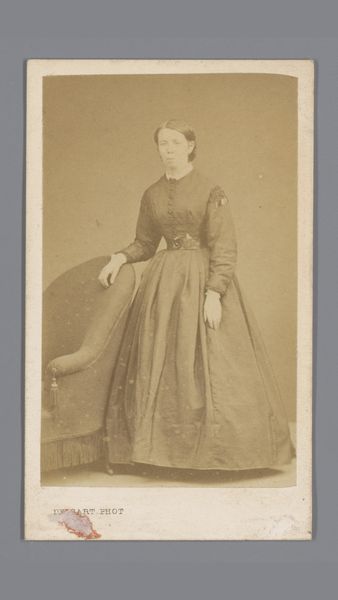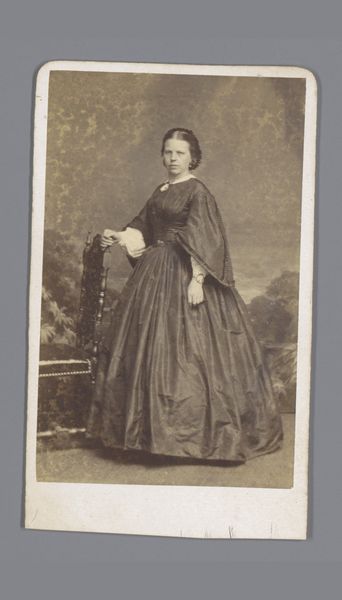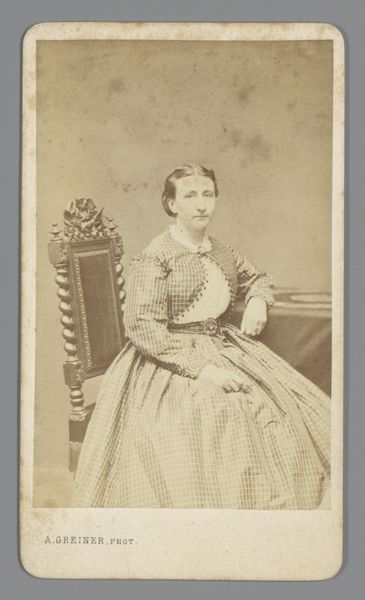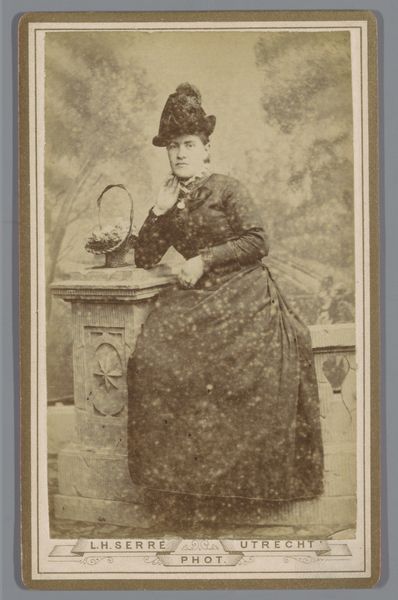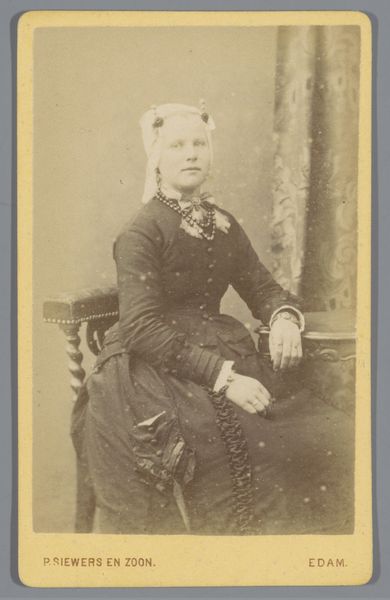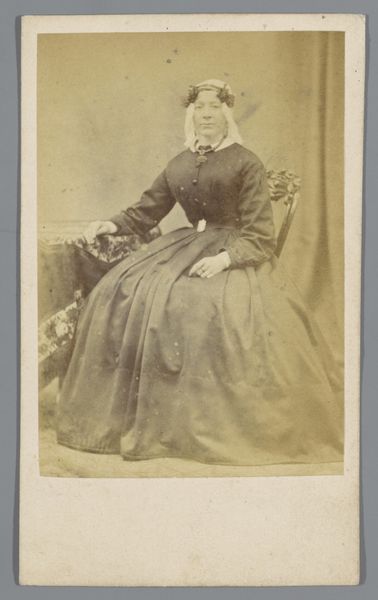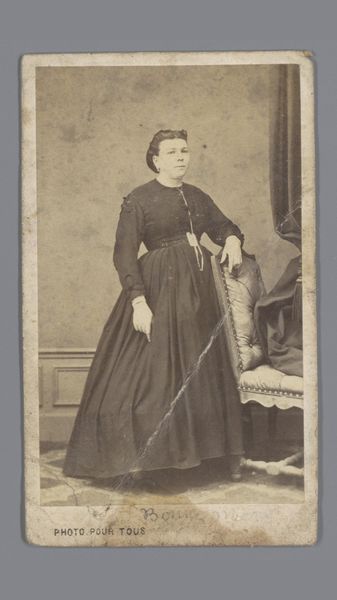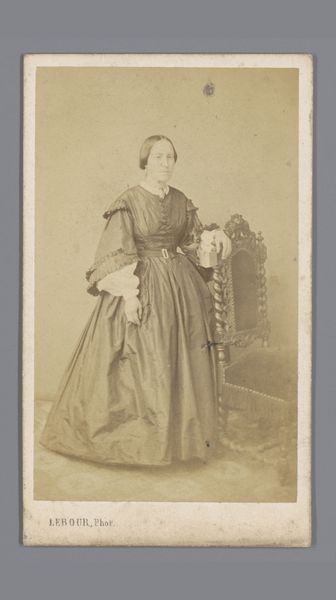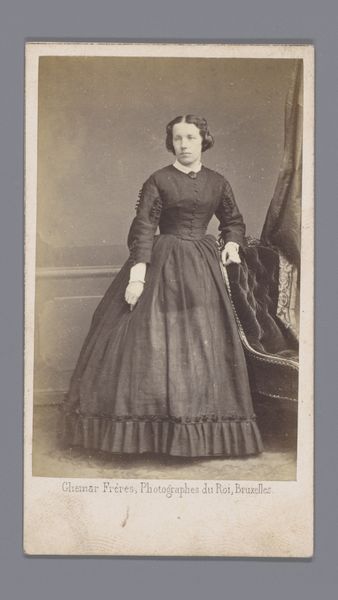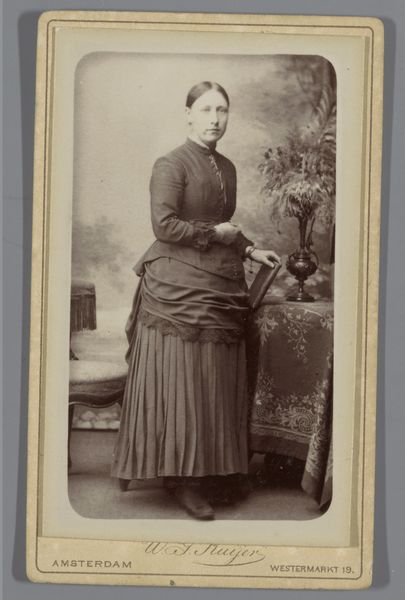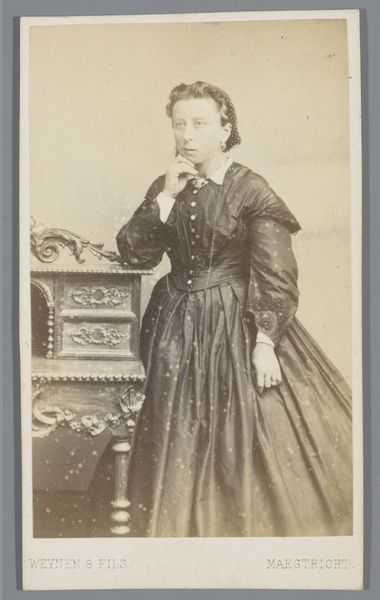
#
aged paper
#
homemade paper
#
paper non-digital material
#
pale palette
#
light coloured
#
personal journal design
#
personal sketchbook
#
folded paper
#
paper medium
#
design on paper
Dimensions: height 103 mm, width 64 mm
Copyright: Rijks Museum: Open Domain
Albert Greiner made this carte de visite of an unknown woman in Amsterdam, but we don't know exactly when. The rise of photography in the 19th century opened new possibilities for social representation. Photography studios popped up in cities across Europe and North America, offering portraiture to a wider public than ever before. Although the sitter's name is lost to us, her clothing and presentation tell us something about her social position. Her elaborate bonnet and neatly arranged dress suggest a certain level of financial comfort. But the conventions of photographic portraiture also have a role to play: the backdrop is not a real place, but a painted canvas, and the chair looks as though it has come straight from the photographer's props department! Understanding this image as a social document requires us to consider photographic history as well as the history of fashion and social class. Historians make use of sources like trade directories and old newspapers to help interpret the visual clues that artworks offer us.
Comments
No comments
Be the first to comment and join the conversation on the ultimate creative platform.
